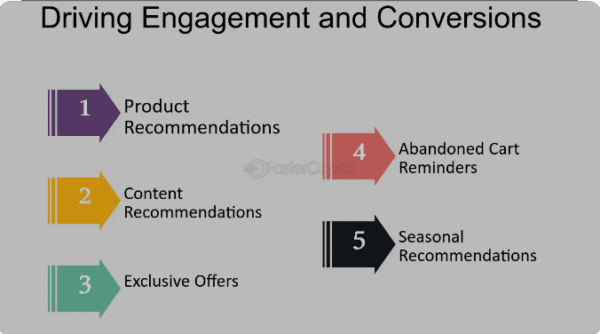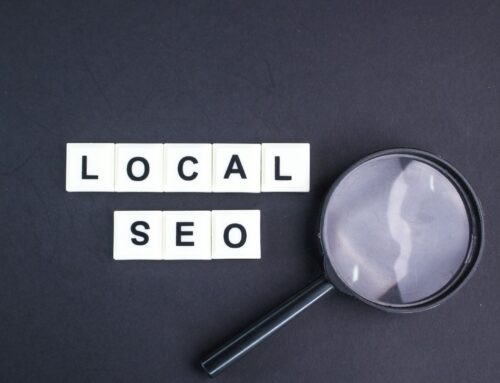Table of Contents
If you’re running an e-commerce business, you know how important attracting and retaining customers is. One of the most effective ways to do this is through content marketing. Content marketing for e-commerce involves creating and distributing informative and engaging content to your target audience to build brand awareness, establish trust, and drive sales.
But what exactly is content marketing, and how does it work for e-commerce? Content marketing creates and shares valuable, relevant, consistent content to attract and retain a clearly defined audience. In the case of e-commerce, this content can take many forms, including blog posts, videos, social media posts, product descriptions, and more. By providing your audience with valuable and engaging content, you can establish your brand as an authority in your industry, build trust with your customers, and ultimately drive more sales.
Content marketing for e-commerce has many benefits, including increased brand awareness, improved search engine rankings, and higher conversion rates. By creating high-quality content that resonates with your target audience, you can attract more visitors to your site, keep them engaged, and ultimately turn them into loyal customers. In the following sections, we’ll explore some of the key strategies and best practices for creating compelling content marketing campaigns for your e-commerce business.

Understanding Content Marketing for E-Commerce
If you’re running an e-commerce business, content marketing is essential to your marketing strategy. Content marketing for e-commerce involves creating and distributing valuable, relevant, and consistent content to attract and engage a target audience. In this section, we’ll define e-commerce content marketing, discuss the importance of content strategy, and help you identify your target audience.
Defining E-Commerce Content Marketing
E-commerce content marketing is a strategic approach that involves creating and distributing content to promote your products or services. This content can take many forms, including blog posts, videos, infographics, social media posts, etc. E-commerce content marketing attracts and engages potential customers, builds brand awareness, and drives sales.

The Importance of Content Strategy
Creating content without a strategy is like driving without a map. You might eventually reach your destination, but it will take longer, and you’ll likely make some wrong turns. A content strategy helps you define your goals, identify your target audience, and determine the types of content that will resonate with them. It also lets you plan and execute your content creation and distribution efforts.
Identifying Your Target Audience
To create effective e-commerce content, you need to understand your target audience. Who are they? What are their pain points and challenges? What motivates them to make a purchase? You can create content that speaks directly to your audience and addresses their needs by answering these questions.
To identify your target audience, start by creating buyer personas. A buyer persona is a fictional representation of your ideal customer. It includes demographic information and details about their interests, needs, and challenges. Once you clearly understand your target audience, you can create content that resonates with them and drives results.
In summary, e-commerce content marketing is a strategic approach to creating and distributing content that promotes your products or services. A content strategy is essential to ensure that your content resonates with your target audience and drives results. By identifying your target audience and creating content that addresses their needs, you can build brand awareness and drive sales for your e-commerce business.
Creating Compelling Content
Content marketing is crucial to the success of any e-commerce business. It helps you attract, engage, and retain your target audience. Creating compelling content is essential to this success. Here are some tips on creating content that resonates with your audience.
Types of Content for E-Commerce

You can create various types of content for your e-commerce business. Some of the most popular ones include videos, images, infographics, blog posts, and product descriptions. Each type of content serves a different purpose and can help you achieve other goals. For instance, videos are great for showcasing your products in action, while infographics can help you simplify complex information.
Crafting Valuable Content
Creating valuable content is crucial to the success of your e-commerce business. Valuable content gives your audience something worthwhile: information, entertainment, or inspiration. To create helpful content, you must understand your audience’s needs, preferences, and pain points. This will help you create content that resonates with them and gives them something valuable.
Visuals and Multimedia Integration
Visuals and multimedia integration are essential to creating compelling content for your e-commerce business. Visuals such as images and videos can help you showcase your products more engagingly and interactively. Multimedia integration, such as embedding videos and audio, can help you create a more immersive experience for your audience. Use high-quality visuals and multimedia to enhance the overall user experience.
Creating compelling content is crucial to the success of your e-commerce business. By understanding your audience’s needs, crafting valuable content, and integrating visuals and multimedia, you can create content that resonates with your audience and helps you achieve your business goals.

Optimizing for Search Engines
Optimizing your website for search engines is crucial to drive traffic to your e-commerce store. Optimizing optimization (SEO) is a set of practices that help SEO understand your website’s content and rank it higher in search engine results pages (SERPs). This section will cover some of the best SEO practices for e-commerce websites.
SEO Best Practices
When optimizing your website for search engines, there are optimizing practices to follow. First, ensure your website has a clear and organized structure. This means creating a hierarchy of organization with your homepage at the top, followed by category pages and then individual product pages. Use descriptive and keyword-rich URLs, and ensure your website’s navigation is easy to use.
Another critical SEO best practice is to create high-quality, original content. This includes product descriptions, blog posts, and other types of content that can help your website rank higher in search results. Use relevant keywords throughout your content, but don’t overdo it. Keyword stuffing can hurt your website’s ranking.
Understanding SEO Topic Clusters
One of the most essential concepts in modern SEO is topic clusters. This means grouping related content on your website and linking between them using relevant anchor text. By doing this, you can signal to search engines that your website is an authority on a particular topic and increase your chances of ranking higher in search results.
For e-commerce websites, topic clusters can be created around product categories. For example, if you sell clothing, you might make a topic cluster around “men’s fashion,” with subtopics like “men’s shoes,” “men’s jackets,” and so on. Each subtopic would have a page with links to the main “men’s fashion” page.

On-Page, Off-Page, and Technical SEO
There are three main types of SEO: on-page, off-page, and technical. On-page SEO refers to optimizing your website’s pages, including optimizing HTML tags. Off-page SEO includes link building and social media marketing, which can help increase your website’s authority and visibility. Technical SEO involves optimizing your website’s structure and code, including optimizing responsiveness.
All three types of SEO are essential for e-commerce websites. On-page optimization helps individual product pages rank high in search results, while off-page optimization increases your website’s overall visibility. Technical SEO is also essential, as it can help ensure that your website is easy for search engines to crawl and index.
By following these SEO best practices and understanding the importance of topic clusters, on-page, off-page, and technical SEO, you can improve your e-commerce website’s visibility in search results and drive more traffic to your store.
Driving Engagement and Conversion
You need to create informative and engaging content to drive engagement and conversion. This section will discuss strategies for leveraging social media and influencers, email marketing, and optimizing rates.
To effectively leverage social media and influencers, you must create high-quality content that resonates with your target audience. This could be product reviews, tutorials, or behind-the-scenes looks at your business. You should also engage with your followers and respond to their comments and messages to build a relationship with them.

Email Marketing Strategies
Email marketing is a great way to nurture leads and drive sales. You can use email to promote your products, share valuable content, and offer exclusive deals to your subscribers. To maximize, you must segment and personalize your interests. It would be best to optimize your conversion by including call-to-action and eye-catching visuals. A/B testing can help you determine which subject lines, copy, and designs are most effective at driving engagement and conversion.
Some common CRO strategies include improving your website speed, simplifying your checkout process, and adding social proof to your product pages. You should also test different elements of your website, such as your headlines, images, and calls to action, to see what works best for your audience.
Leveraging social media and influencers, implementing email marketing strategies, and optimizing your conversion rate can drive conversion optimization for your e-commerce business.
Measuring Success and ROI
When it comes to content marketing for e-commerce, measuring success and ROI is crucial. This helps you understand whether your efforts are paying off and what you can do to improve your content strategy. This section will discuss key content marketing metrics, how to analyze performance and some tools for monitoring your results.
Key Content Marketing Metrics
There are several metrics you can use to measure the success of your content marketing efforts. These include:
- Traffic: This measures the number of visitors to your website. It’s a good indicator of how well your content is performing, but it doesn’t tell the whole story.
- Engagement: This measures how much people are interacting with your content. This includes likes, shares, comments, and other forms of engagement.
- Conversions: This measures the number of people who take a desired action, such as purchasing or signing up for a newsletter. It is the most important metric for e-commerce businesses.
- ROI: This measures the return on investment for your content marketing efforts. It considers the cost of creating and promoting your content and compares it to the revenue generated.
Analyzing CoAnalyzingformance
To analyze your content, you must explore the analysis that matters most to your business. This will help you identify areas where you can improve and make data-driven decisions about your content strategy. Here are some steps you can follow:
- Set goals: Before you start analyzing, you must set goals for what you want to achieve. These could include increasing traffic, boosting engagement, or driving more conversions.
- Track your metrics: Use tools like Google Analytics, SEMrush, or other resources to track your metrics over time. This will help you see how your content is performing and identify trends.
- Compare your results: Compare your results to your goals and industry benchmarks. This will help you see how you compare to your competition and identify areas for improvement.
- Make adjustments: Based on your analysis, adjust your content strategy. This could include creating more targeted content, promoting your content more effectively, or optimizing for conversions.

You can use several tools and resources to monitor your content marketing efforts. Here are a few:
- Google Analytics: This free tool allows you to track your website traffic and other metrics.
- SEMrush: This is a paid tool that allows you to track your website’s performance, as well as your competitors’.
- Glossary: This resource can help you understand the terminology associated with content marketing and e-commerce.
- Content Marketing Metrics: This resource provides a detailed overview of the key metrics you should track for your content marketing efforts.
Using these tools and resources, you can better understand how your content marketing efforts are performing and make data-driven decisions about your strategy.







